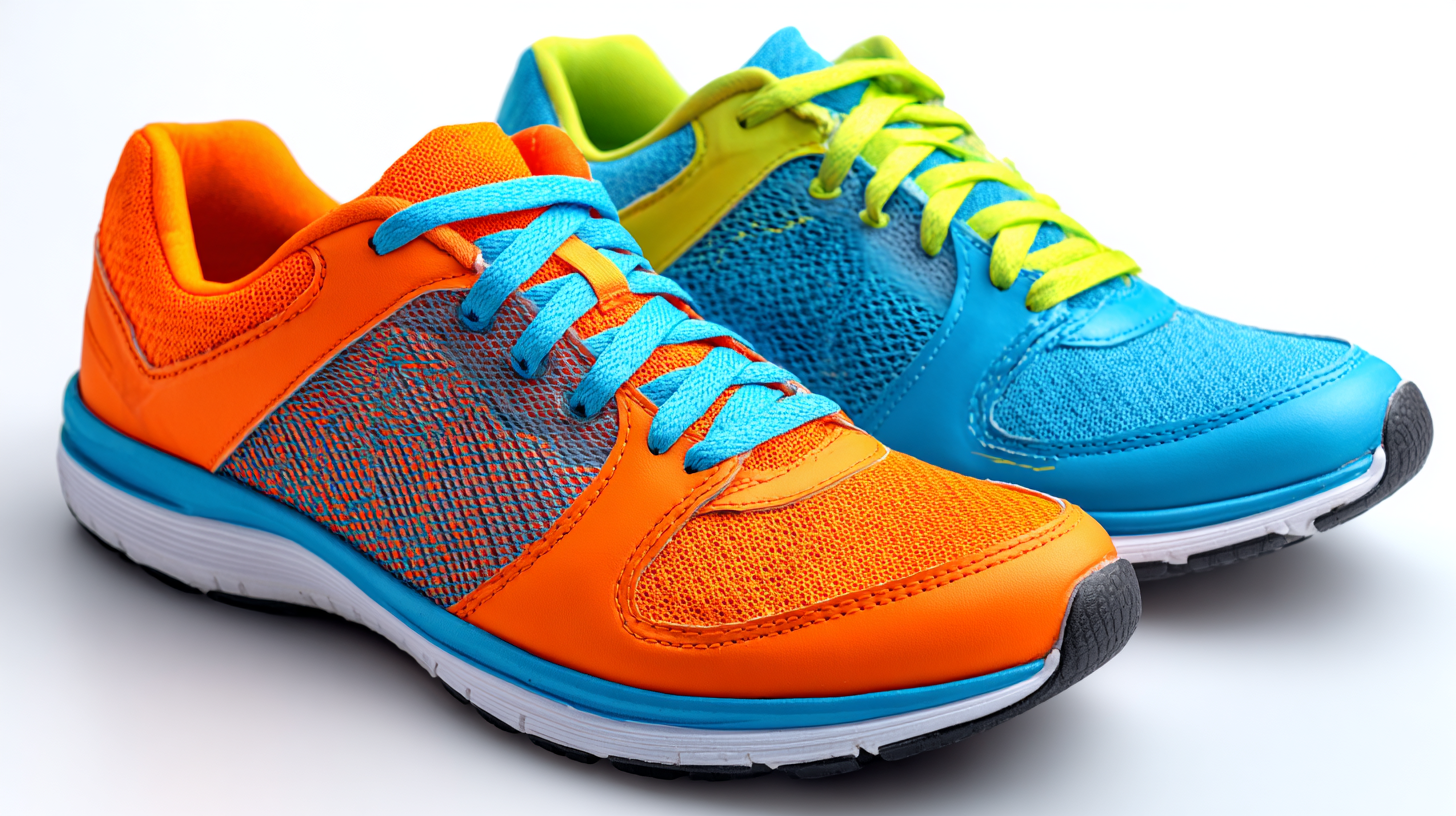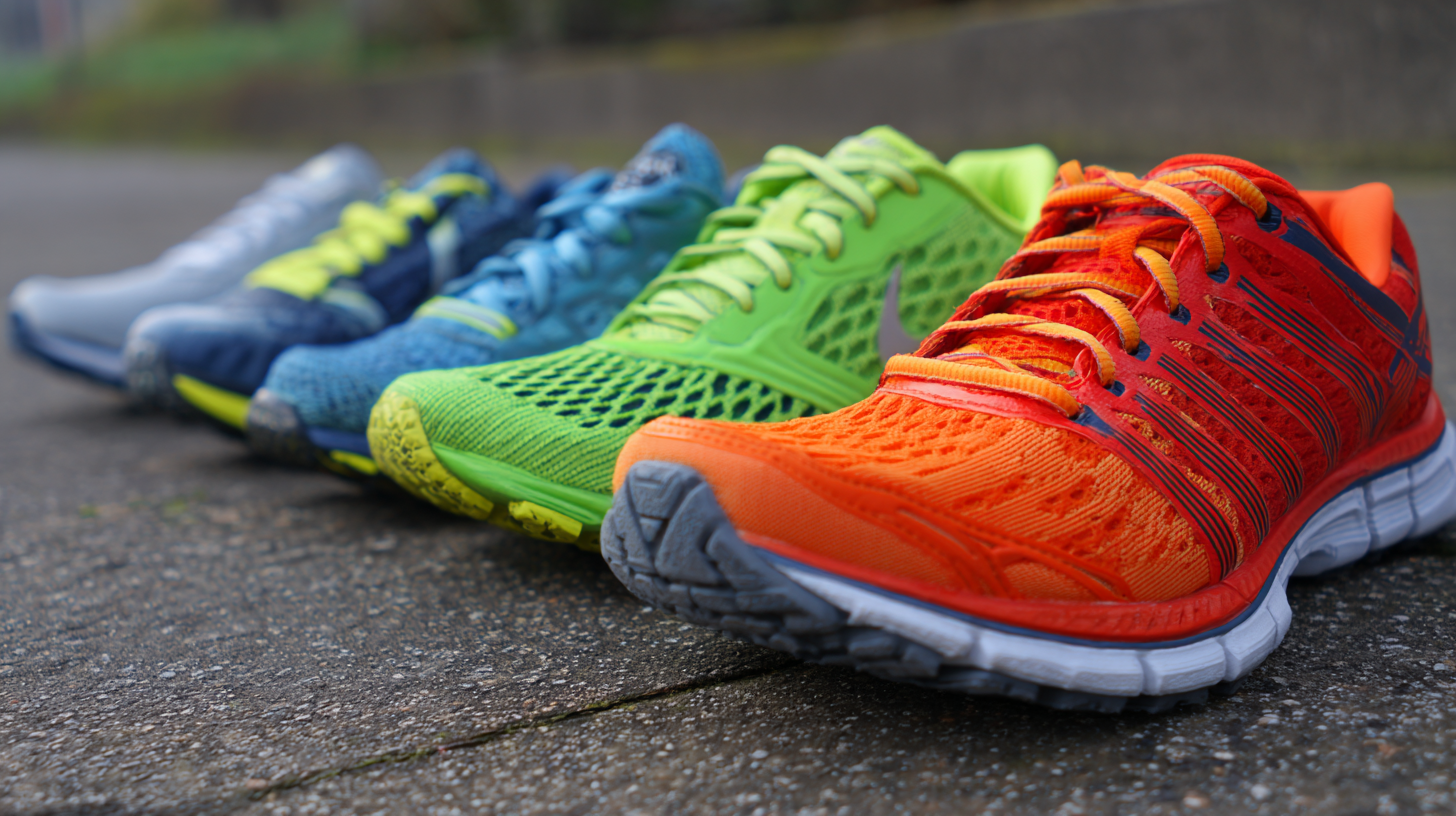Choosing the right sports shoes is crucial for athletes and fitness enthusiasts alike, as studies reveal that approximately 70% of runners experience injuries related to footwear selection. With the global sports shoes market projected to reach $95.14 billion by 2025, investing in a pair that offers optimal performance and injury prevention has never been more important. According to a report by the American Orthopaedic Foot & Ankle Society, improper footwear can lead to common issues such as plantar fasciitis, shin splints, and even stress fractures. Understanding the dynamics of your foot type, the specific sport engaged in, and the fit of the shoes can significantly enhance performance while reducing the risk of injuries.

In this blog, we will explore essential tips to help you navigate the myriad options available in sports shoes, ensuring that you make an informed choice for your athletic pursuits.
When it comes to selecting the right sports shoes, understanding the different types available is crucial for enhancing performance and preventing injuries. Each sport has specific requirements, and shoes are designed to meet those demands. For instance, running shoes often have cushioned soles for shock absorption, which helps mitigate impacts on joints during long runs. In contrast, basketball shoes typically offer ankle support and lateral stability, essential for quick movements and sudden stops on the court.
Additionally, activities like tennis and soccer require specialized footwear. Tennis shoes feature a more durable outsole for traction on hard courts, while soccer cleats are designed with specific stud patterns to provide grip on grass or turf. It’s also important to consider aspects such as foot arch, width, and personal comfort when choosing a pair. Finding the right fit not only enhances performance but also reduces the risk of common injuries associated with improper footwear. Thus, investing time in understanding the requirements of your activity and testing different shoe types can lead to better athletic outcomes and a healthier experience.
| Shoe Type | Best For | Key Features | Cushioning Level | Injury Prevention |
|---|---|---|---|---|
| Running Shoes | Running and Jogging | Lightweight, breathable, good grip | High | Protects against shin splints and runner's knee |
| Cross-Training Shoes | Gym and Multi-Sport Workouts | Stable, supportive, versatile | Medium | Reduces risk of ankle sprains and foot fatigue |
| Basketball Shoes | Basketball Players | High-top design, ankle support, traction | Medium to High | Minimizes chances of ankle injuries |
| Trail Running Shoes | Off-Road Running | Durable, enhanced grip, water-resistant | High | Protects against slips and uneven surfaces |
| Soccer Cleats | Soccer Players | Studs for traction, lightweight | Low to Medium | Minimizes sliding and improves stability |
 Proper cushioning and support in sports shoes play a crucial role in reducing injury risks among athletes and fitness enthusiasts. Research indicates that inadequate footwear can increase the likelihood of injuries by as much as 30%. A study published in the Journal of Sports Sciences found that shoes with optimal cushioning significantly decrease the impact forces placed on joints, thus lowering the occurrence of injuries such as stress fractures and plantar fasciitis.
Proper cushioning and support in sports shoes play a crucial role in reducing injury risks among athletes and fitness enthusiasts. Research indicates that inadequate footwear can increase the likelihood of injuries by as much as 30%. A study published in the Journal of Sports Sciences found that shoes with optimal cushioning significantly decrease the impact forces placed on joints, thus lowering the occurrence of injuries such as stress fractures and plantar fasciitis.
Selecting the right sports shoes involves understanding the unique requirements of your sport and your foot type. For example, runners benefit from shoes that offer enhanced forefoot and heel cushioning, while basketball players require models with superior ankle support. According to a report by the American Podiatric Medical Association, 90% of athletes reported that the right shoes improved their performance and reduced discomfort during physical activity. Investing in properly cushioned and supportive footwear not only maximizes performance but also preserves long-term health in active individuals.
When it comes to selecting sports shoes, understanding the significance of fit is paramount. A shoe that is too tight can create pressure points and impede circulation, while a shoe that is too loose risks instability, leading to missteps and potential injuries. Measuring your foot accurately is essential; factors such as length, width, and arch type should dictate your choice. Many brands offer various width options, allowing athletes to find a superior fit that complements their unique foot shape and running style.
Furthermore, the science of shoe sizing extends to understanding how different sports impact your foot’s biomechanics. For instance, runners often benefit from shoes that feature cushioning and support tailored to their gait mechanics. Cross-training and court sports may require shoes with lateral support and flexibility. It's advisable to try shoes on at the end of the day when your feet are slightly swollen from daily activities; this ensures that the fit you choose accommodates natural foot expansion during exercise. Investing time in this process can lead to better performance and significantly reduce the risk of injuries.
When it comes to selecting the perfect sports shoes, the materials used in their construction play a critical role in determining both durability and comfort. According to a report by the American Sports Medicine Institute, approximately
60% of athletes experience injuries related to improper footwear. This statistic highlights the necessity of choosing shoes made from high-quality materials that offer support and cushioning. For instance, shoes with a durable
mesh upper provide breathability while maintaining structure, which is essential for sports involving rapid movements.
Moreover, the cushioning technology significantly impacts performance and injury prevention. A study published in the Journal of Biomechanics indicates that shoes featuring advanced foams, like EVA (ethylene vinyl acetate), can reduce impact forces by up to
30% compared to traditional materials. This reduction not only enhances comfort but also minimizes the risk of injuries such as stress fractures and joint pain. Therefore, athletes should carefully consider the material composition of their
footwear, as it directly influences both their on-field performance and long-term health.
When it comes to selecting sports shoes, the insoles you choose can significantly impact your performance and injury prevention. Custom footbeds offer tailored support, cushioning, and alignment based on your unique foot shape and biomechanics. This personalization can lead to improved performance, as they help to reduce fatigue and enhance stability during athletic activities. In contrast, standard insoles may provide basic comfort but often fail to address individual needs, potentially leading to discomfort or injuries over time.

Tip 1: When trying on shoes, pay close attention to how different insoles feel. If possible, bring your custom footbeds to the store to assess how they fit with various shoe models. The perfect combination can make a substantial difference in your training routine.
Tip 2: Consider visiting a podiatrist or a specialized footwear store to get a foot assessment. This can help determine whether custom footbeds are necessary for your sport or if a good quality standard insole would suffice.
Tip 3: Ensure that the shoes you choose allow enough room for your custom insoles. A snug fit is essential, but too much pressure can lead to discomfort. Balance is key to achieving optimal performance and preventing injuries.
